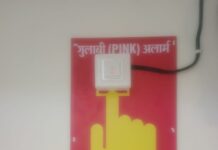 As India celebrated its 72 Independence day yesterday sure our Prime Minister opened gifts for his magical box sure thats only words right now and we hope these words become reality.
As India celebrated its 72 Independence day yesterday sure our Prime Minister opened gifts for his magical box sure thats only words right now and we hope these words become reality.
In 2014, Narendra Modi’s job was easier. Tired of the corruption, cronyism and policy missteps of UPA II, people were looking for an escape. Modi was selling a dream of “achche din” and people readily bought into it.
It is different now. Modi is now the incumbent. His narrative of hope will now be judged on the touchstone of performance. And if the gap between promise and achievements is considerable, selling a narrative of renewed hope will be difficult.
This presents a challenge for the prime minister who has gone on record claiming that his platform for 2019 will be “development, fast development and development for all”. To campaign on a development plank again will require Modi to convince the electorate that his track record as the country’s chief executive officer has been exemplary. ‘Development’ is an aspiration narrative, and aspirations are set progressively higher, not lower.
It was worth noting how Modi handles his final Independence Day address before he seeks a return mandate from people, and whether he chooses the occasion to delineate his campaign priorities. It was inevitable that Modi would choose the occasion to put his campaign in motion. The prime minister is a consummate orator. He loves the big stage. It is hard to get a stage bigger than the ramparts of Red Fort on India’s Independence Day.
In his 82-minute address on Wednesday, the prime minister performed twin tasks — he set the momentum for 2019 and projected himself again as the symbol of country’s hope and aspirations. That he would choose a narrative of optimism and present himself at the front and centre of that narrative as a “change agent” wasn’t a surprise. India is demographically young, and it is the nature of youth to be ambitious and impatient.
The interesting bit was witnessing the prime minister’s craft in reselling the dream of a resurgent India as an incumbent.
This was a difficult art. To make his narrative believable, Modi had to first convince the electorate that he has lived up to his promises and then lay out the roadmap for the future. Whether he managed to convince people depends on his performance and the depth of his vision. On these parameters would lie his appeal to voters to elect him again so that there is the necessary continuity in the plan to “transform” India. Modi’s skill as an orator was evident in the way he pulled it off.
But oratory is not enough. If Modi has failed to deliver on his promises on all parameters, no amount of oratory or sleek rhetoric will work. The nature of his 2014 campaign promise and mandate make this job tougher because people expect nothing short of a “transformational” change from Modi. Incremental change won’t do.
What we saw during the I-Day address, therefore, was a conscious attempt from Modi to “compare and contrast” India in 2013 and 2018. On an assumption that public memory is short, Modi strived to remind the people of the affliction that India was suffering from and then laid out the transformational changes that he has brought about in a span of four years. He stressed on both the micro and macro revamps to hammer home the claim that he has performed to the best of his abilities.



